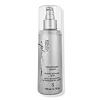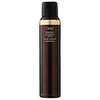What's inside
What's inside
 Key Ingredients
Key Ingredients

 Benefits
Benefits

 Concerns
Concerns

 Ingredients Side-by-side
Ingredients Side-by-side

Water
Skin ConditioningSd Alcohol 40
AstringentPEG-75 Lanolin
EmollientVp/Va Copolymer
Propoxytetramethyl Piperidinyl Dimethicone
Cetrimonium Chloride
AntimicrobialTrideceth-6
EmulsifyingC11-15 Pareth-7
EmulsifyingHydroxypropyltrimonium Honey
Polyquaternium-55
Lactobacillus/Wasabia Japonica Root Ferment Extract
AntioxidantLactobacillus/Date Fruit Ferment Extract
HumectantSilanetriol Melaninate
Skin ConditioningPolyquaternium-10
Rice Amino Acids
Skin ConditioningSuperoxide Dismutase
AntioxidantPolyperfluoroethoxymethoxy Difluoroethyl PEG Phosphate
Skin ConditioningBambusa Vulgaris Leaf/Stem Extract
HumectantHydrolyzed Wheat Protein
Skin ConditioningHydrolyzed Wheat Starch
Skin ConditioningPolyquaternium-11
Dehydroacetic Acid
PreservativeBenzyl Alcohol
PerfumingParfum
MaskingWater, Sd Alcohol 40, PEG-75 Lanolin, Vp/Va Copolymer, Propoxytetramethyl Piperidinyl Dimethicone, Cetrimonium Chloride, Trideceth-6, C11-15 Pareth-7, Hydroxypropyltrimonium Honey, Polyquaternium-55, Lactobacillus/Wasabia Japonica Root Ferment Extract, Lactobacillus/Date Fruit Ferment Extract, Silanetriol Melaninate, Polyquaternium-10, Rice Amino Acids, Superoxide Dismutase, Polyperfluoroethoxymethoxy Difluoroethyl PEG Phosphate, Bambusa Vulgaris Leaf/Stem Extract, Hydrolyzed Wheat Protein, Hydrolyzed Wheat Starch, Polyquaternium-11, Dehydroacetic Acid, Benzyl Alcohol, Parfum
Water
Skin ConditioningVp/Va Copolymer
Isobutane
Propane
Cetearyl Alcohol
EmollientPEG-40 Hydrogenated Castor Oil
EmulsifyingOleth-20
CleansingParfum
MaskingPhenoxyethanol
PreservativePolyquaternium-4
Laureth-4
EmulsifyingSodium C14-16 Olefin Sulfonate
CleansingStearyl Alcohol
EmollientCetrimonium Bromide
AntimicrobialPanthenol
Skin ConditioningEthylhexylglycerin
Skin ConditioningSilicone Quaternium-3
Glycerin
HumectantHelianthus Annuus Seed Oil
EmollientTocopheryl Acetate
AntioxidantTrideceth-12
EmulsifyingBenzophenone-4
UV AbsorberSodium Benzoate
MaskingSodium Hydroxide
BufferingPolyurethane-14
Alcohol Denat.
AntimicrobialSilicone Quaternium-16
Skin ConditioningCitrullus Lanatus Fruit Extract
Skin ConditioningLitchi Chinensis Fruit Extract
Skin ConditioningLeontopodium Alpinum Flower/Leaf Extract
Skin ConditioningUndeceth-11
EmollientAmp-Acrylates Copolymer
Tocopherol
AntioxidantAminomethyl Propanol
BufferingButyloctanol
HumectantUndeceth-5
EmulsifyingStyrax Benzoin Resin Extract
MaskingCitric Acid
BufferingPotassium Sorbate
PreservativeAcetic Acid
BufferingIodopropynyl Butylcarbamate
PreservativeLimonene
PerfumingHexyl Cinnamal
PerfumingLinalool
PerfumingCitral
PerfumingWater, Vp/Va Copolymer, Isobutane, Propane, Cetearyl Alcohol, PEG-40 Hydrogenated Castor Oil, Oleth-20, Parfum, Phenoxyethanol, Polyquaternium-4, Laureth-4, Sodium C14-16 Olefin Sulfonate, Stearyl Alcohol, Cetrimonium Bromide, Panthenol, Ethylhexylglycerin, Silicone Quaternium-3, Glycerin, Helianthus Annuus Seed Oil, Tocopheryl Acetate, Trideceth-12, Benzophenone-4, Sodium Benzoate, Sodium Hydroxide, Polyurethane-14, Alcohol Denat., Silicone Quaternium-16, Citrullus Lanatus Fruit Extract, Litchi Chinensis Fruit Extract, Leontopodium Alpinum Flower/Leaf Extract, Undeceth-11, Amp-Acrylates Copolymer, Tocopherol, Aminomethyl Propanol, Butyloctanol, Undeceth-5, Styrax Benzoin Resin Extract, Citric Acid, Potassium Sorbate, Acetic Acid, Iodopropynyl Butylcarbamate, Limonene, Hexyl Cinnamal, Linalool, Citral
Ingredients Explained
These ingredients are found in both products.
Ingredients higher up in an ingredient list are typically present in a larger amount.
Parfum is a catch-all term for an ingredient or more that is used to give a scent to products.
Also called "fragrance", this ingredient can be a blend of hundreds of chemicals or plant oils. This means every product with "fragrance" or "parfum" in the ingredients list is a different mixture.
For instance, Habanolide is a proprietary trade name for a specific aroma chemical. When used as a fragrance ingredient in cosmetics, most aroma chemicals fall under the broad labeling category of “FRAGRANCE” or “PARFUM” according to EU and US regulations.
The term 'parfum' or 'fragrance' is not regulated in many countries. In many cases, it is up to the brand to define this term.
For instance, many brands choose to label themselves as "fragrance-free" because they are not using synthetic fragrances. However, their products may still contain ingredients such as essential oils that are considered a fragrance by INCI standards.
One example is Calendula flower extract. Calendula is an essential oil that still imparts a scent or 'fragrance'.
Depending on the blend, the ingredients in the mixture can cause allergies and sensitivities on the skin. Some ingredients that are known EU allergens include linalool and citronellol.
Parfum can also be used to mask or cover an unpleasant scent.
The bottom line is: not all fragrances/parfum/ingredients are created equally. If you are worried about fragrances, we recommend taking a closer look at an ingredient. And of course, we always recommend speaking with a professional.
Learn more about ParfumWe don't have a description for Vp/Va Copolymer yet.
Water. It's the most common cosmetic ingredient of all. You'll usually see it at the top of ingredient lists, meaning that it makes up the largest part of the product.
So why is it so popular? Water most often acts as a solvent - this means that it helps dissolve other ingredients into the formulation.
You'll also recognize water as that liquid we all need to stay alive. If you see this, drink a glass of water. Stay hydrated!
Learn more about Water